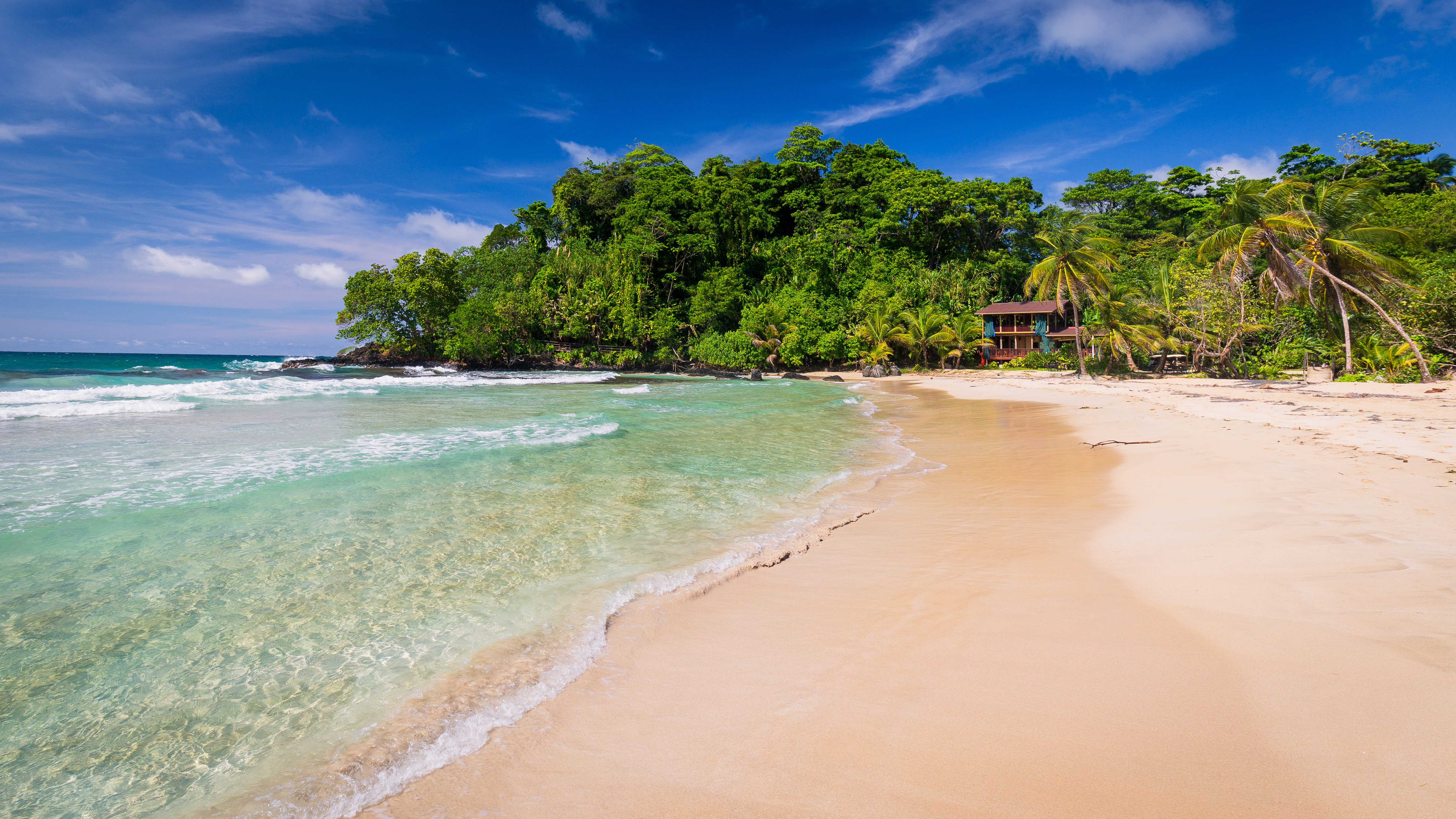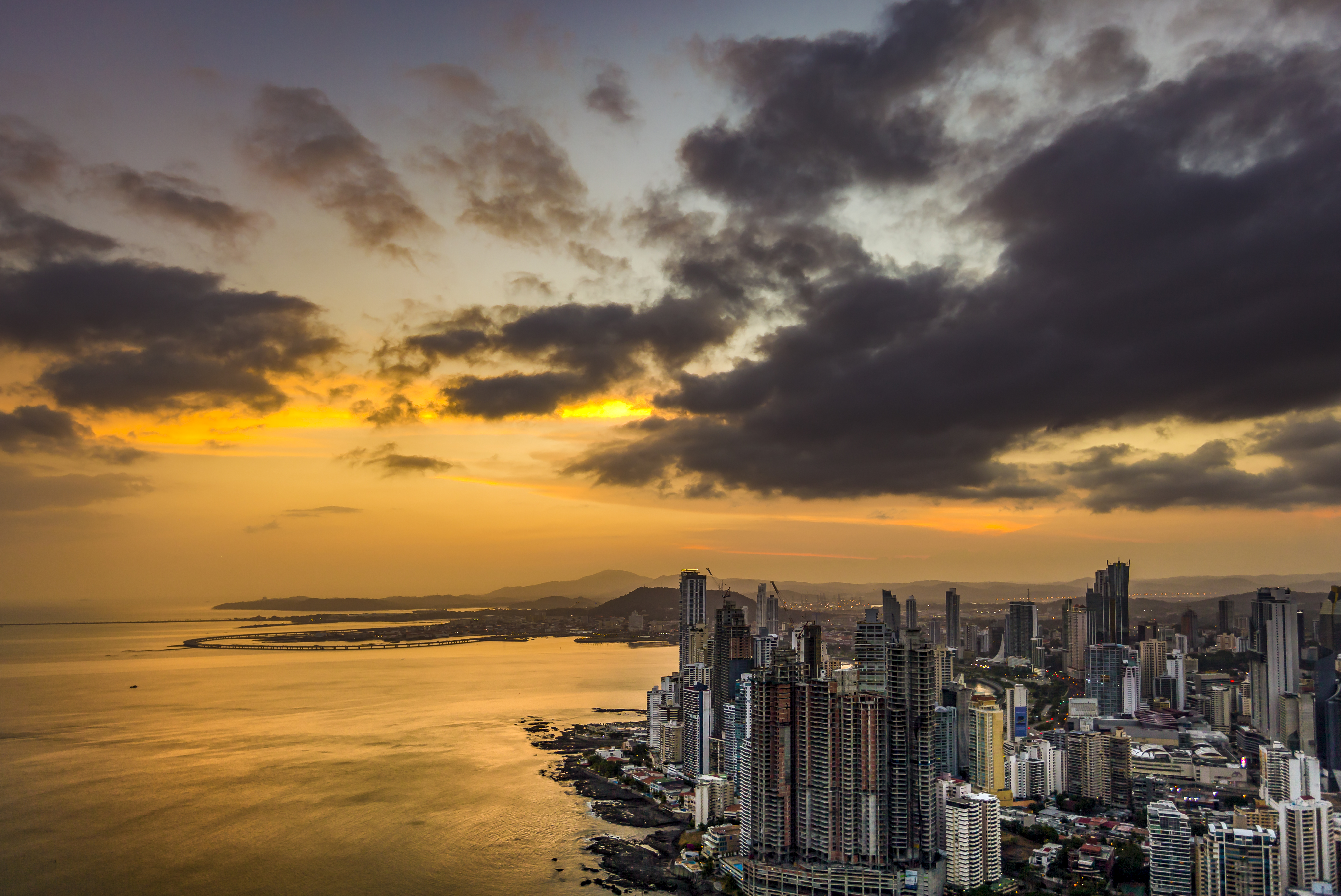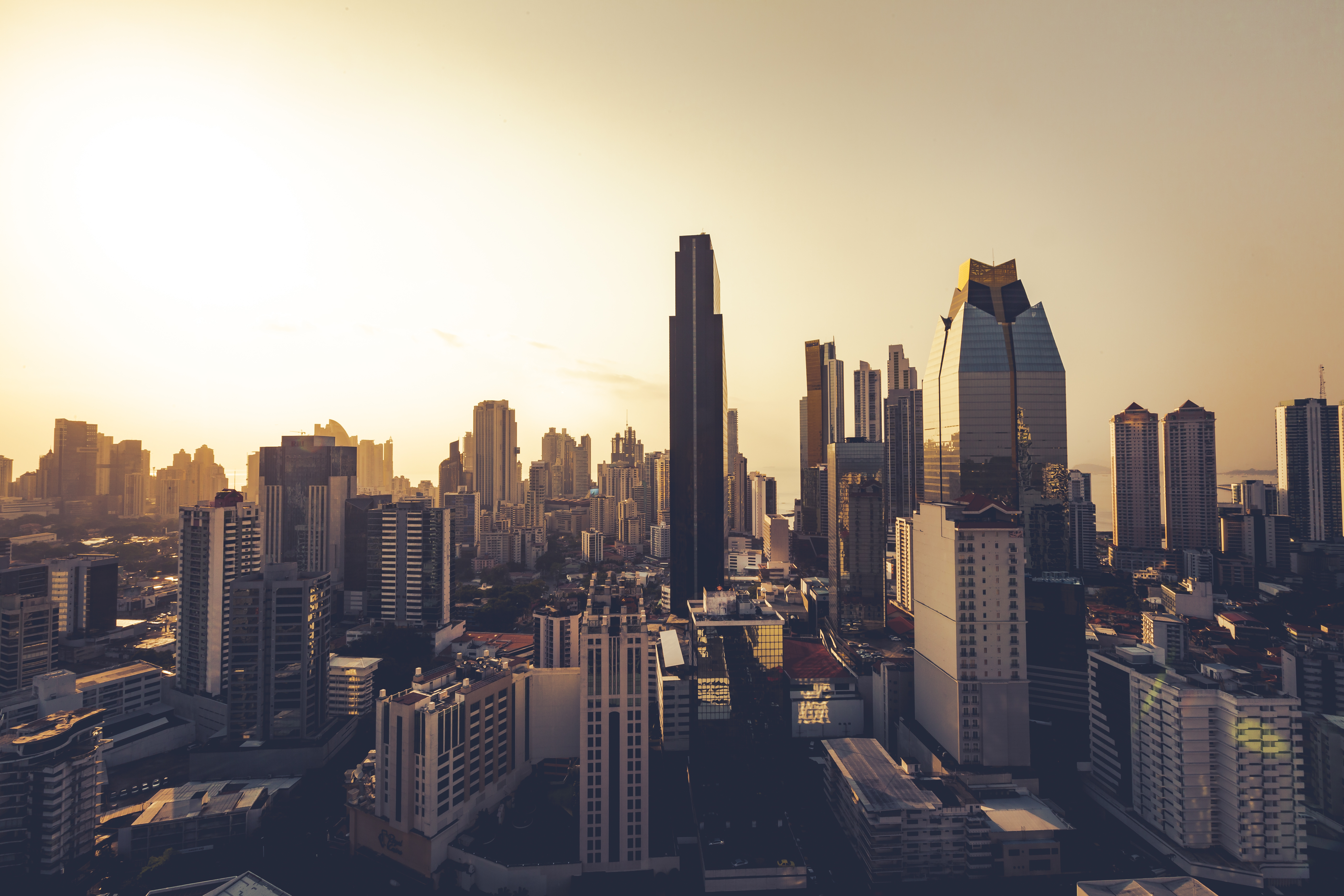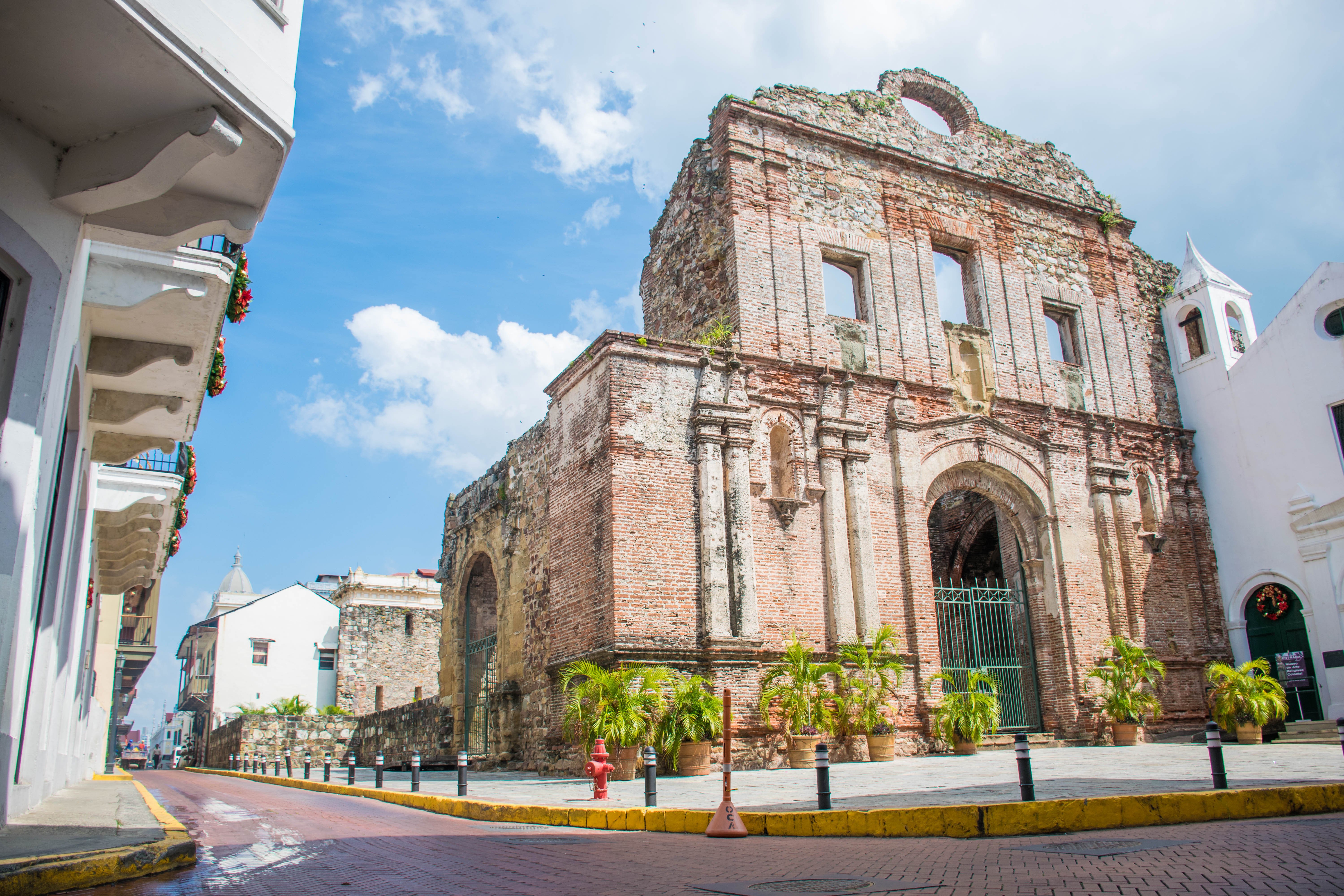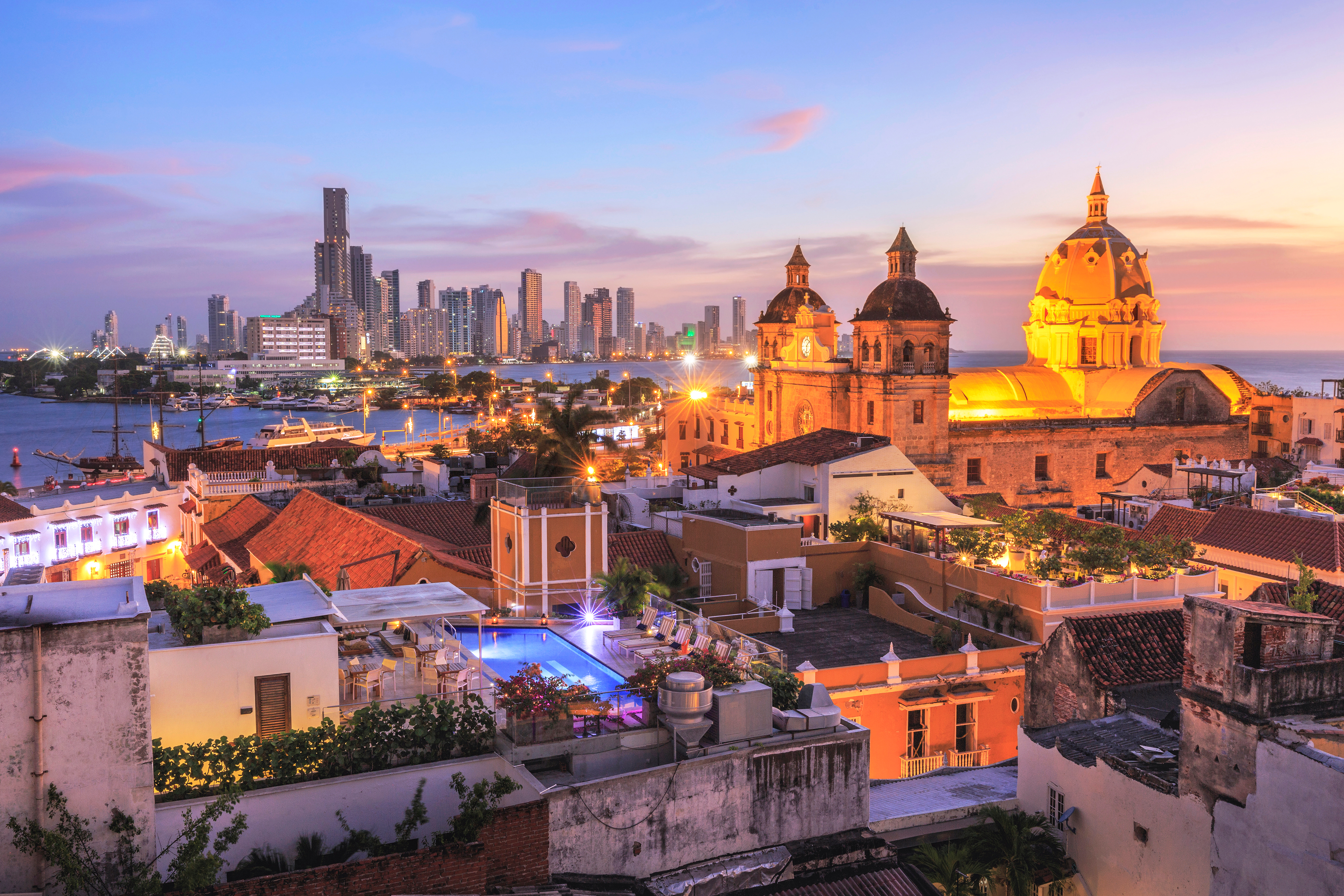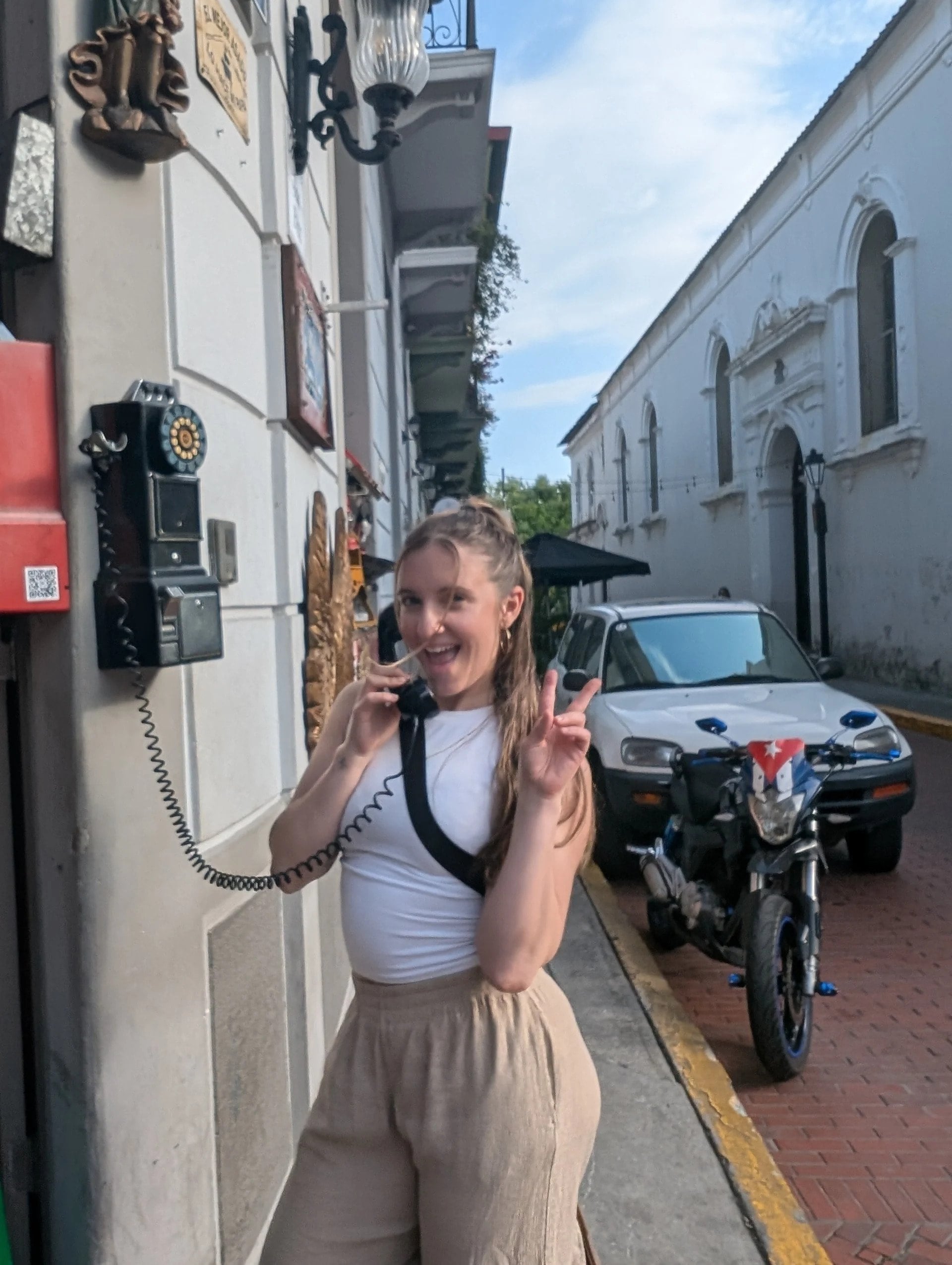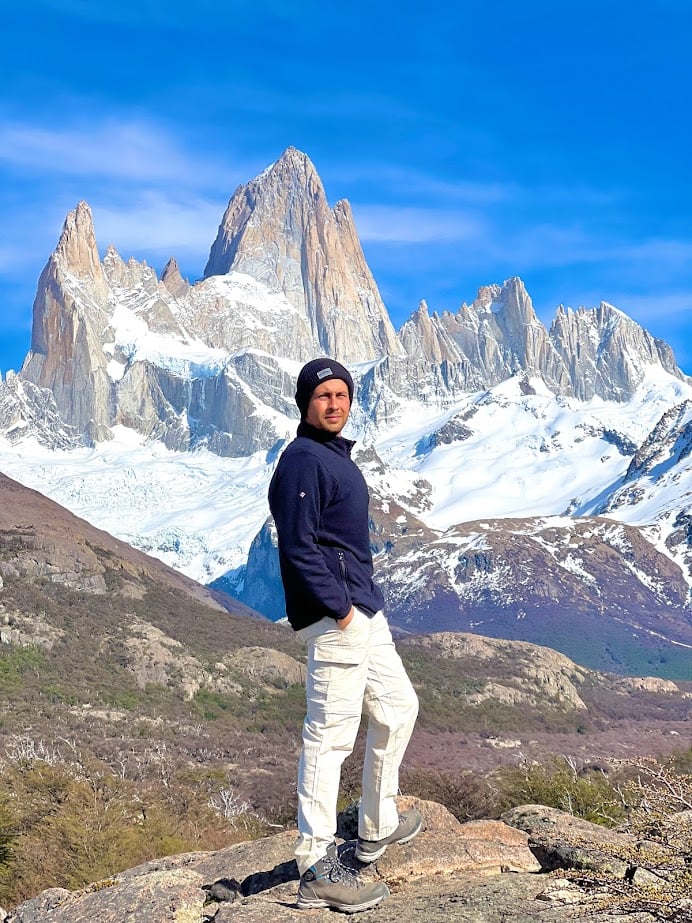The most popular time to visit Panama is during the dry season from December to April. The wet season, however, offers the same same pleasant temperatures as well as cheaper prices, smaller crowds, and greener interior landscapes.
Discover Tailor-Made Panama Vacations
With scenic beaches and lush tropical rainforest, a trip to Panama promises to be unforgettable.
A vibrant mosaic of culture and nature, strategically cradled between the Caribbean Sea and the Pacific Ocean, Panama is a travel gem just waiting to be discovered.
Much has been written in recent years about its dynamic modern capital, its lush rainforests, and its pristine white-sand beaches, but the nation's true heartbeat is its diverse population of over 4.4 million people, a colourful blend of Mestizo, Native Americans, and other heritages. Their welcoming spirit will inform every aspect of your visit, which can be as relaxed or as action-packed as you desire. This relatively small country at the juncture of two continents packs quite a lot into its long, S-shaped geography.
Featured Highlights
- Marveling at the iconic Panama Canal, one of the Seven Wonders of the Modern World
- Exploring the colourful streets of Panama City’s historic Casco Viejo, a UNESCO World Heritage Site
- Trekking through lush rainforests in Soberanía National Park
- Snorkeling in the clear waters of Bocas del Toro
- Touring the coffee farms of idyllic Boquete
- Relaxing on the white-sand beaches of the San Blas Islands
Featured Panama Trip Ideas
Perfect for families, couples, beachcombers, and adventurers, Panama is one of the most fascinating destinations in Central America.From VIP tours of the Panama Canal to private yacht charters in the San Blas Islands, Goway can help see the country in your own unique way, customizing your itinerary to suit and surpass your expectations.
Read More
Skyline & Sand: Panama City & Bocas del Toro
Panama City and Bocas del ToroHighlights of Panama: City, Jungle & Coast
Panama Canal and Panama CityDeluxe Panama: Panama City, Boquete & Bocas
Panama City and Bocas del ToroClassic Panama: City, Highlands & Caribbean
Panama City and Bocas del ToroDiscover Panama: Panama City & Santa Clara
Panama CityPanama & Colombia In Style
Cartagena and Panama CityDon't see the
perfect trip idea?
Request a custom quote.
Turn your travel dreams into reality with Goway. Our customized vacations take travellers to all corners of the world.
What do Goway's travellers say?
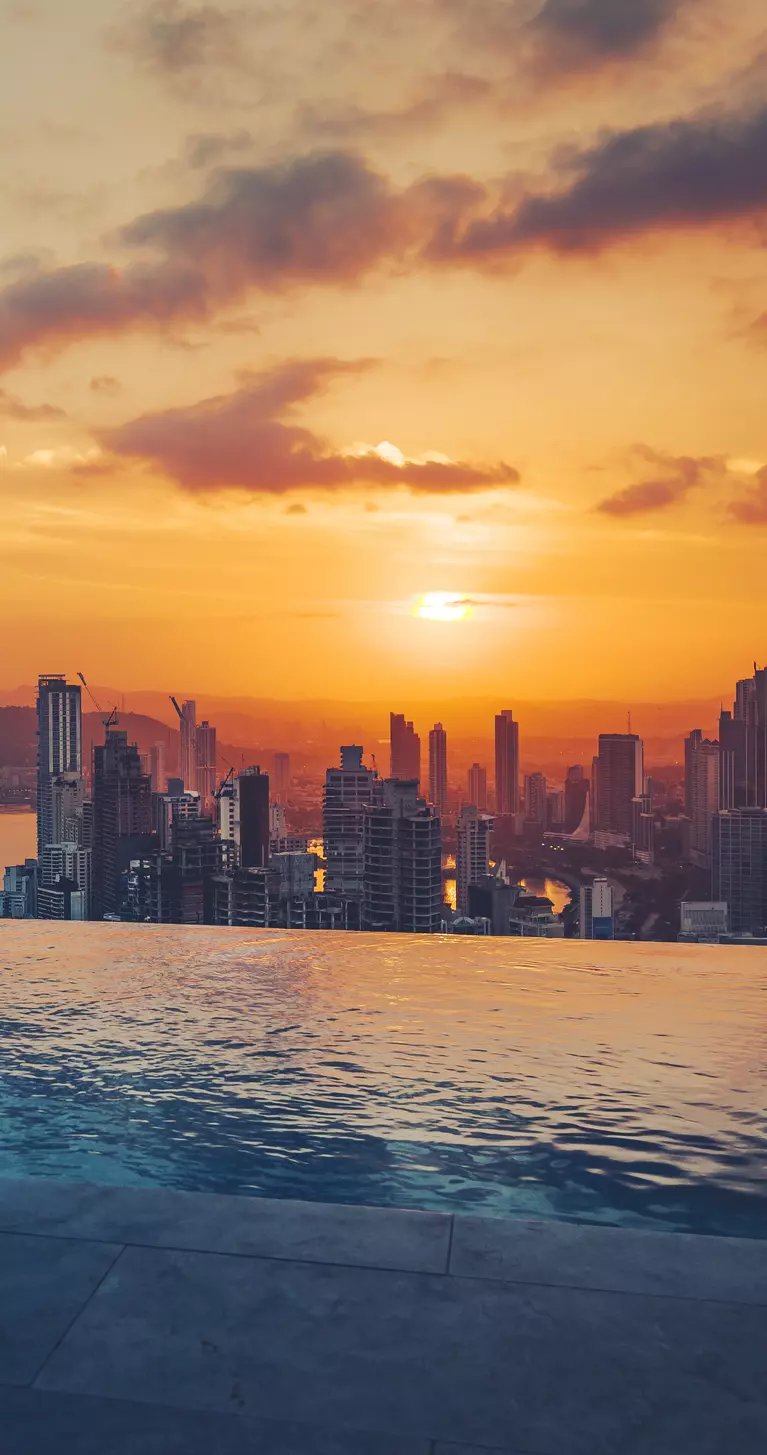
Get to know Panama before you go.
Best Time To Visit
The dry season runs from December to April in Panama, offering near-perfect weather as well as bigger tourist crowds.
Pre-booking is key during this period, when both prices and demand are at their peak.
Panama’s wet season runs from May to November, with most regions of the country experiencing daily rain. This means that visitor crowds are thinner and prices a bit lower. The country’s interior is also at its greenest at this time of year, while whale watching and surfing are at their finest.
Holiday-wise, Panamanians love to celebrate, marking Christmas and Easter in elaborate fashion and hosting a number of major festivals throughout the year, including Dia de la Independencia in November and Carnival in February/March.
Read our full guide to the Best Time to Visit and let us help you book your perfect Panama journey.
What do the experts say?
U.S. dollars are used interchangeably with Panamanian balboas (at a 1:1 rate). There’s no need to exchange currency if you’re carrying U.S. cash.
Many assume Panama is just about the canal. In reality, it’s also a paradise for beaches, highlands, and indigenous culture — from Caribbean islands like the San Blas to the coffee region of Boquete.
Panama has more bird species than the United States and Canada combined — over 1,000. For birdwatchers, it’s one of the richest destinations in the world.
A visit to an Emberá indigenous village along the Chagres River is a cultural highlight — arriving by dugout canoe, sharing traditional food, and learning about their way of life in the rainforest.
Globetrotters should ensure they visit Isla Coiba, a UNESCO World Heritage site. Once a penal colony, today it’s one of the best diving and snorkeling spots in the Americas, often compared to the Galápagos for its marine biodiversity.
Places To Go
Handcrafted journeys to our most popular places to visit in Panama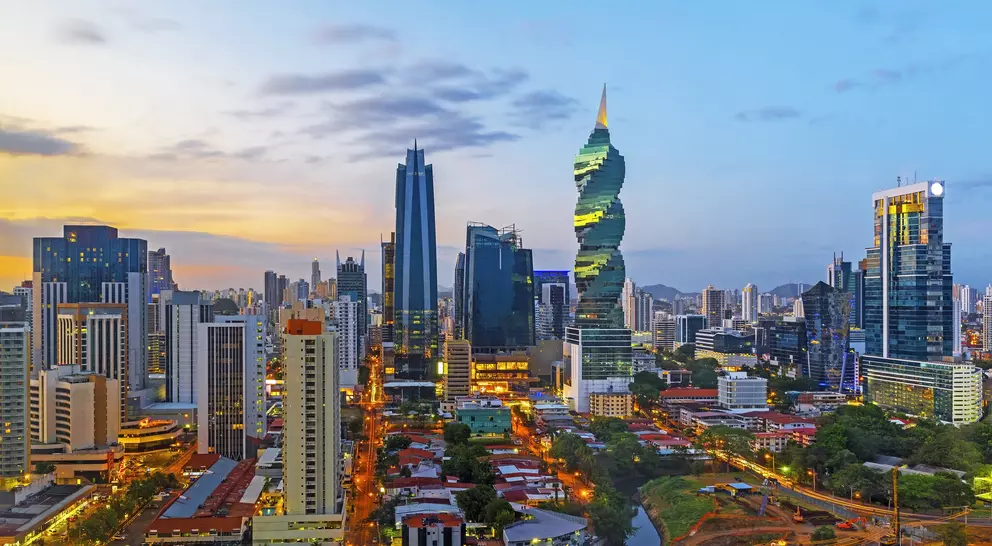
Panama City
Panama City is the political and administrative centre of the country and is also its capital and...
Panama City is the political and administrative centre of the country and is also its capital and largest city. Located in the Pacific entrance of the world-famous Panama Canal, Panama City hosts...
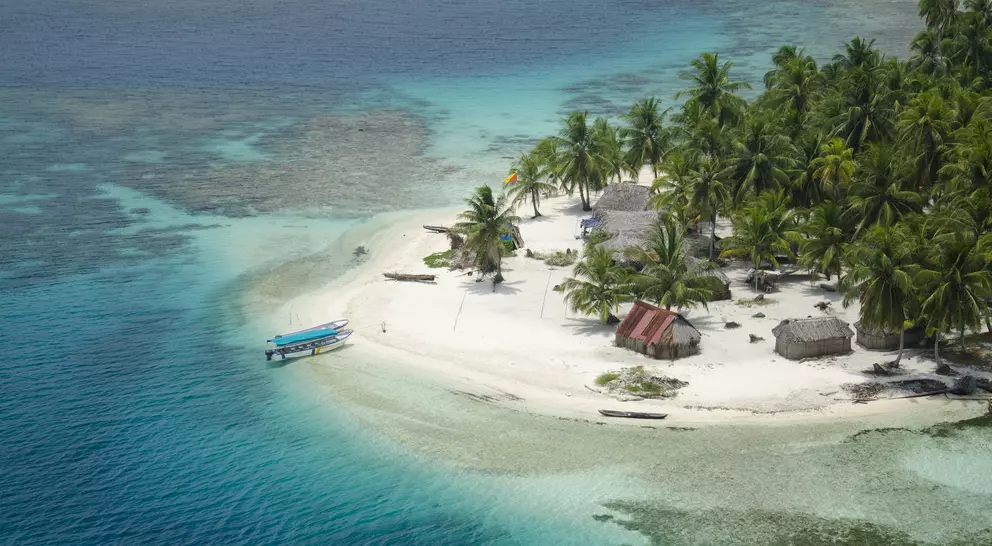
San Blas Islands
While on a Panama vacation, you can visit the San Blas Islands situated off the Isthmus of Panama...
While on a Panama vacation, you can visit the San Blas Islands situated off the Isthmus of Panama to the east of the canal, an archipelago that is made up of approximately 378 islands and cays, only...
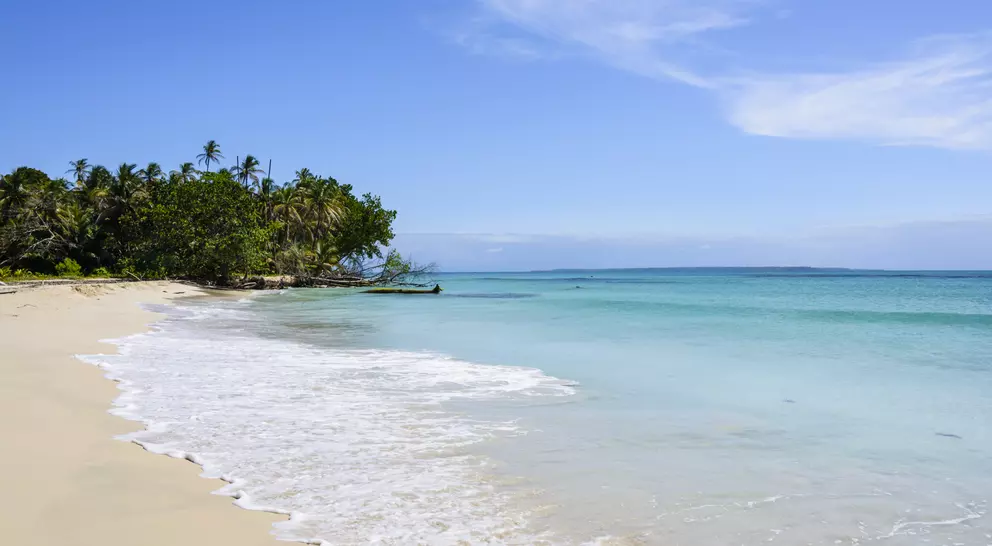
Bocas del Toro
Located 32 km (19.88 mi) from the Costa Rican border, Bocas del Toro is an archipelago in Panama...
Located 32 km (19.88 mi) from the Costa Rican border, Bocas del Toro is an archipelago in Panama that is made up of six islands, several uninhabited islets and two national parks to be enjoyed on a...
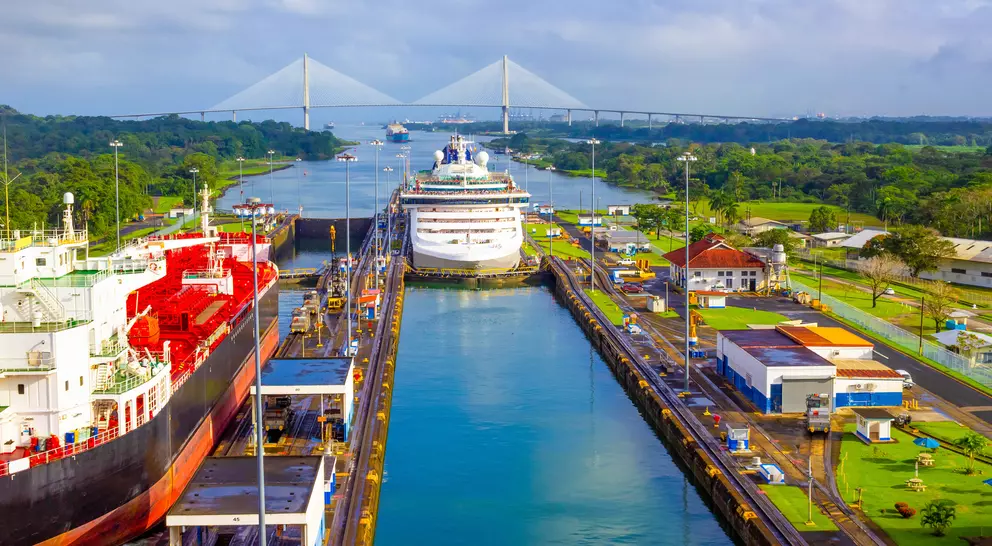
Panama Canal
The world-famous Panama Canal which has to be seen on a Panama vacation is synonymous with the...
The world-famous Panama Canal which has to be seen on a Panama vacation is synonymous with the country and connects the Atlantic Ocean (via the Caribbean Sea) to the Pacific Ocean. Upon its...
Travel Styles
Explore Panama by Travel Type
Ways to Travel
Discover your perfect travel style—crafted for every dream and journey.

Collections
Curated journeys that capture the spirit, beauty, and essence of travel.

Ways to Travel
Discover your perfect travel style—crafted for every dream and journey.

Collections
Curated journeys that capture the spirit, beauty, and essence of travel.
Frequently Asked Questions
What is the best time to visit Panama?
Do I need a visa for Panama?
Most countries do not need a visa to visit Panama.
Can I visit both the Pacific and Caribbean coasts in one trip?
Both coasts are easily accessed on one vacation and highly encouraged to appreciate the country’s diversity.
What is Panama famous for?
Panama is best known for the Panama Canal, its well-preserved colonial architecture, its pristine beaches and water, and its lush rainforests full of exotic wildlife.
How do I visit the Panama Canal?
The Canal is accessible from Panama City, where day trips and longer visits can easily be arranged. Among Goway’s offerings are an afternoon tour involving a visit to the Miraflores Locks, a presentation from the Panama Canal Authority, and a swing through the town of Balboa.
Is Panama safe for tourists?
Panama is considered fairly safe, but visitors should take normal safety precautions in both urban and rural settings.
What is the food like in Panama?
Panama’s cuisine is a flavourful blend of Indigenous, Caribbean, and European influences, with common staples including rice, beans, corn, tropical fruits, and seafood. Sancocho (a hearty meat and vegetable stew) is a national favourite, as is arroz con pollo. Fresh ceviche is a must along the country’s long coasts.
Can I combine Panama with Costa Rica?
Yes. With their close proximity, Panama and Costa Rica make a wonderful combination holiday, as do Panama and Colombia.
What currency is used in Panama?
The local currency is the Panamanian balboa, which is interchangeable with the American dollar.
Are the San Blas Islands worth visiting?
Very much so. Boasting pristine beaches, clear waters, and swaying palms, the San Blas Islands are the perfect place to relax and unwind. They are also a good place to get to know the local Indigenous cultures. Respecting those customs is critical, though, and it is also worth noting that while visiting you will be largely disconnected from the digital world.
Unlock more by subscribing to our newsletter
With our newsletter, you’ll get access to regular communications that inspire you and help you explore the world your way
